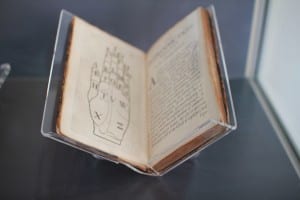Doctor Manjula’s Prescription – A History of British Sign Language
By Ashley Cowburn, on 11 July 2013
When Thomas Tillsye and Ursula Russell married in Leicester in February 1575, Thomas made his wedding vows in sign. Unknowingly, they were presented with a timeless wedding present – their marriage became the first recorded description of sign use in British history.
In 2003, British Sign Language (BSL) was recognised by the British government as a full and independent language.
Today, there are an estimated 50,000 – 70,000 people in Britain who use BSL as their preferred language. And, like most sign language communities, BSL is a minority language. Deaf communities within Britain have experienced centuries of discrimination in their fight for recognition.
UCL’s Deafness, Cognition and Language Centre (DCAL) exhibition, ‘The History of British Sign Language’ in the North Cloisters at University College London, exhumes the fascinating – and often, overlooked – history of British Sign Language.
The exhibition exposes the widespread discrimination suffered by the Deaf community following the 1880 Second International Congress on the Education of the Deaf. The Milan event infamously passed several resolutions which declared that sign language was inferior to Oralism – and should be banned.
The decision was detrimental. Widespread suppression of sign language in many deaf schools across the world followed the Milan conference. 130 years later, in 2010, the decision was overturned.
A physical timeline of significant political and cultural events – including the inaugural games of the Deaflympics in 1924 – has been printed on the ground of the exhibition.
Charles Dickens’s Doctor Marigold’s Prescription also appears in the timeline. Published in the midst of Victorian Britain, the novel is about a Deaf girl, Sophy, raised as an adopted child using sign – Marigold’s ‘prescription’.
BSL, as the exhibition elegantly demonstrates, has evolved as naturally as any other spoken language. Researcher Dr Manjula Patrick, insisted that there was no mechanisation involved in the development of sign. Rather, it evolved as deaf communities gathered in cultural settings – the church being one crucial institution.
“Sign languages are natural human languages, with their own vocabularies and grammars. They arise wherever deaf communities come into existence. There is no universal sign language; each community has its own language but those are not manual versions of the spoken or written languages used by hearing communities around them”. – BSL Exhibition, UCL
The exhibition illuminates the truly three dimensional and visual nature of sign with a range of interactive activities, rare books, pamphlets and early films. The History of British Sign Language Exhibition will continue until the 25 July 2013.
A printed description of Thomas Tillsye and Ursula Russell’s wedding will greet you at the beginning of the exhibition.
 Close
Close


